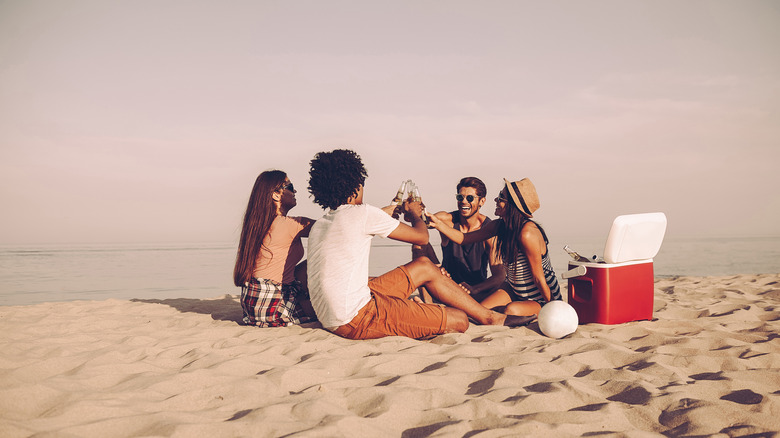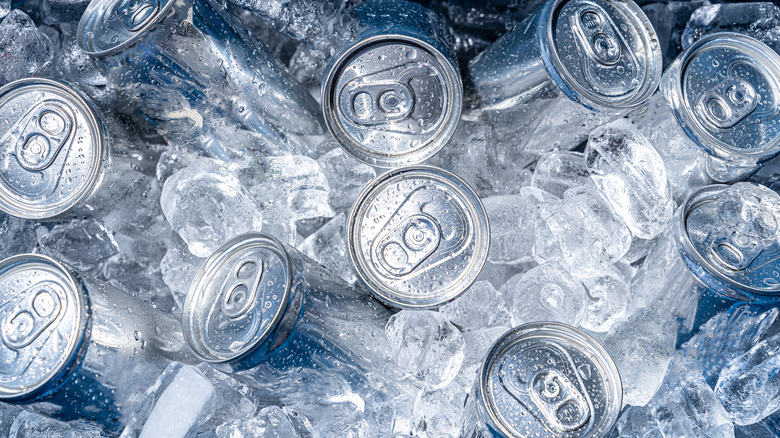Why You Should Never Put Warm Food Back Into A Cooler
When you spend a sun-filled day at the beach or head out to a leisurely picnic in the park, packing a cooler full of your favorite eats ensures maximum fun on a perfect summer day. But nothing derails a Sunday-funday faster than food poisoning, and the culprit could be your cooler.
Because bacteria multiplies rapidly in heat, the FDA recommends keeping food storage coolers at 40 degrees (the minimum safe temp) or below. Food that's been left out for two or more hours at temperatures above 40 degrees, or more than one hour for temps that climb above 90, are officially in the food poisoning danger zone.
Wired explains that coolers are not meant to hold cold air in, but rather keep hot air out. From a physics perspective, hot air molecules are constantly moving while cold air holds off the heat molecules as they try to burst their way through. As hot air moves in and around the cooler, it chips away at the ice, which is why you should keep it out of direct sunlight and minimize opening and closing the lid.
To ensure the hot air can't penetrate easily through the cooler's walls, Wired recommends getting a molded, seamless one, which gives the warm air less opportunity to leak in. The website also suggests using two different coolers — one for food and one for beverages — to cut down on exposing the cold interior to the hot exterior each time it's opened.
Don't return warm food to the cooler
Regardless of how good your cooler is, the ice will melt eventually. As Hunting Waterfalls demonstrates, a just-filled cooler of ice starts out at zero degrees Fahrenheit. As the ice starts to melt, the temperature drops to 32 degrees. While it's still in the FDA's safe range, and the water-ice mixture keeps this temp relatively stable, the temperature of the air above it is likely creeping higher and higher, especially if the cooler is continually exposed to the warmer air as its being opened. Food not fully submerged in the ice water could be stored at a higher than optimal temperature.
While it may be tempting to repack food items that have been left out longer than the FDA recommends, Our Everyday Life explains that damage has already been done to the food, rendering it unsafe to eat. The bacteria has already grown to a dangerous level and the temperature in the cooler is often not cold enough to halt additional bacteria growth. Don't try to re-cool the food; it's safest to toss it.
So go ahead and impress your guests with a katsu sando and a side of French potato salad on your next outdoor adventure. Just keep food safety top-of-mind when packing that cooler.

